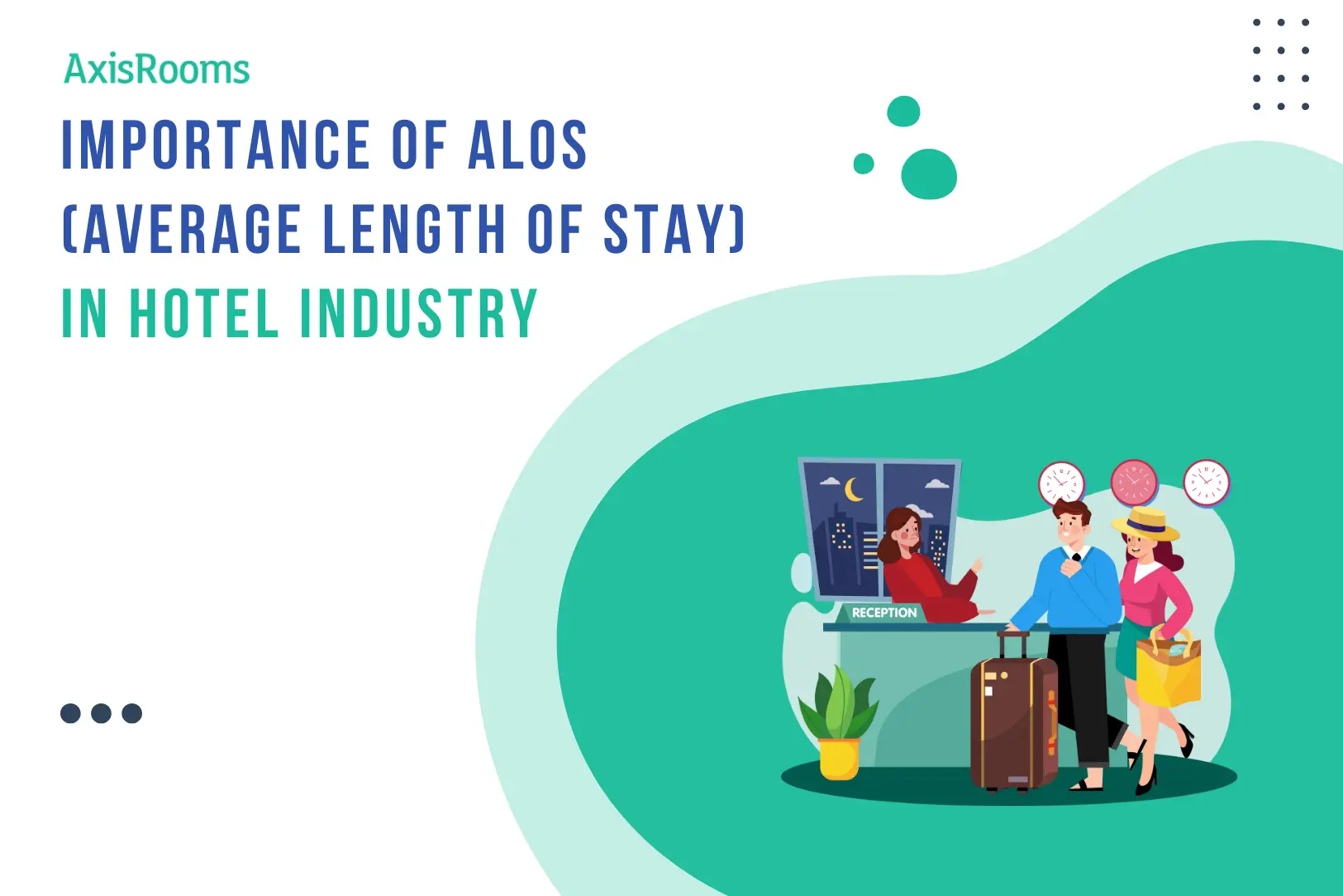Ever wondered how hotels keep track of how long guests stick around? It's through the Average Length of Stay, or ALOS. It’s the average number of nights people spend at a hotel over a certain period—like a month or a year. This number is more than just a statistic; it tells hotel owners a lot about their guests’ preferences and behavior.
A resort might have a high average length of stay where families come together to unwind and relax for several days. On the other hand, business hotels might have a lower ALOS because travelers stay there for a shorter period of time.
Knowing your guests' average length of stay helps you design packages that fit their preferences. If most guests stay around five nights, you could adjust your offerings or plan activities to keep them engaged throughout their visit.
Calculating ALOS: The Simple Math
Calculating ALOS is easy:
ALOS = Total Number of Nights Stayed / Total Number of Reservations
Let’s say a hotel registers 600 room nights from 100 bookings in a month. The math would look like this:
ALOS = 600 / 100 = 6
So, guests are averaging six nights. Tracking ALOS over time helps hotel managers spot trends and adjust their operations to better serve guests.
Why ALOS Is Crucial?
ALOS is essential for several reasons:
- Operational Efficiency: When guests stay for a longer time, it means lesser check in and out which reduces the load for the staff. This can free-up more time for creating a warm, welcoming environment.
- Boosting Revenue: When guests stay longer, they often spend more on hotel services, from dining to spa treatments. Plus, with fewer guests to attract, marketing costs decrease.
- Smart Planning: Knowing when guests extend their stays can help hotels prepare for busy times. For example, if guests usually book longer stays around holidays, hotels can ramp up their marketing to attract more visitors.
- Dynamic Pricing: If ALOS dips, it might be time to roll out some exciting promotions. Think along the lines of “Stay 3 nights, get the 4th night free.” Similarly, if the prices go up, hotels can think of increasing rates during peak times and generate more revenue.
Factors Influencing ALOS
Following factors can influence average length of stay in a hotel:
- Type of Hotel: ALOS largely depends on your location. If your hotel is located on the beachside, guests are likely to book longer stays compared to city business hotels which cater to shorter trips.
- Location: Hotels in tourist spots can expect higher ALOS during peak seasons, while those in business districts may fluctuate based on local events.
- Guest Types: Different guests have distinct patterns. Business travelers often stay just a night or two, while families stay longer to explore local attractions.
- Seasonal Changes: Busy summer months can see ALOS rise, while winter can be slow, leading to shorter stays.
- Unexpected Cancellations: Sudden changes in plans can skew ALOS numbers and affect revenue forecasts.
- OTA Influence: Heavy reliance on Online Travel Agencies (OTAs) can limit how hotels manage bookings, often skewing towards shorter stays.
Strategies to Maximize ALOS
Want to increase ALOS? Here are some practical strategies:
- Set Minimum Stay Requirements: During busy days, hotels must implement minimum stay policies which means booking can only be made if a guests pays for minimum period. During busy periods, enforcing minimum stay policies can help ensure rooms are filled for longer stretches.
- Promotional Packages: Enticing deals, like “Stay 4 nights, pay for 3,” can encourage guests to book longer stays.
- Highlight Local Fun: Showcase nearby attractions and experiences that will make guests want to stay longer.
- Easy Stay Extensions: Make it simple for guests to extend their stay with friendly reminders about special rates during their visit.
- Cater to Remote Workers: With many people working remotely, offering amenities like high-speed Wi-Fi and comfortable workspaces can draw in those looking for longer stays.
The Payoff of Optimizing ALOS
So, what’s in it for hotels if they focus on ALOS? A lot, actually:
- Lower Costs: Fewer check-ins and check-outs mean reduced cleaning and maintenance expenses.
- Happier Guests: Longer stays allow hotels to create memorable experiences, leading to positive reviews and repeat business.
- More Direct Bookings: Encouraging longer stays can lead to more direct bookings, which means hotels save on commissions to third-party booking sites.
In conclusion, understanding Average Length of Stay is essential for hotels to understand their guests better, improve efficiency and enhance guest experiences. When hoteliers focus on this metric, hoteliers can easily focus on creating strategies on how to attract more guests, keep them engaged and earn great ROI. This can ultimately help hoteliers set themselves up for long-term success.
AxisRooms offers an Average Length of Stay (ALOS) feature as part of its comprehensive revenue management solution. This feature enables hoteliers to analyze guest stay patterns, allowing them to optimize pricing strategies and inventory management effectively. By understanding ALOS, hotels can make informed decisions to enhance guest experience and boost overall revenue.
Read Also: Hotel KPIs: The Key to Improving Your Hotel's Performance


